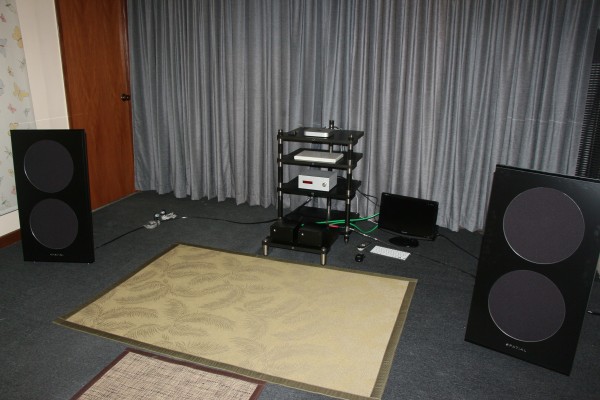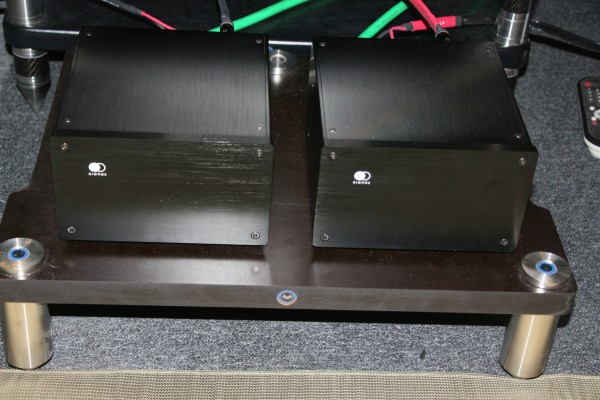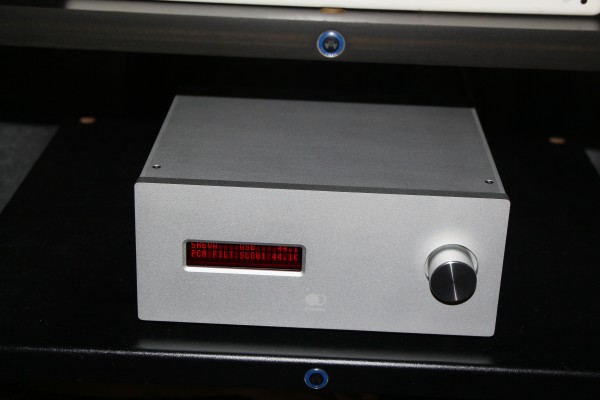
By Lam Seng Fatt
Vince Whatsapped me again – his Clones monoblock amps and Sheva DAC had arrived and he said I just had to listen to the sound of these driving the Spatial open-baffle speakers.
So I popped by his Audiostar showroom again yesterday morning to listen to the new components. During the previous visit, the speakers were driven by a Wyred4Sound mINT integrated amp/DAC. Before I went to his showroom, I was wondering if the Hong Kong-made Clones components could perform well. Was I in for a surprise.
It seems quite clear to me now that there is a paradigm shift in makers of good-sounding hi-fi components from the West to the East. Take for example, the made-in-Thailand Magnet amplifiers (click https://www.av2day.com/2014/05/musical-and-succulent-amplifier/ which were impressive. Now, the made-in-Hong-Kong Clones DAC and amps were just as impressive. Gone are the days when things made in Hong Kong were cheap and of poor quality.
The Clones Audio 25pm 25-watt monoblock looks very basic, but solidly built. It is actually derived from the famed 47 Lab Gaincard amp which hit the audiophile community like a ton of bricks many years ago and inspired numerous DIYers to come up with their own versions. Clones Audio’s amps are one of the versions of the so-called chip amp.

After about an hour spent listening to the Clones monoblock amps, I can opine that they sound very lush like a good Class A amp and very dynamic like a Class AB amp. The mids – vocals especially – are dense and richly detailed. The bass is fast and tight and the highs are quite open.
Though they are only 25-watters, they drive the Spatial Hologram M1 open baffle speakers very well as they are easy to drive at 95dB sensitivity.

The Clones Sheva DSD DAC is built around the 32-bit ESS SABRE ES9018 D/A converter chip. Much care has been taken to ensure the power supply is good enough for the DAC and it has two transformers – one for the digital part and the other for the analogue part.
The Sheva DAC accepts PCM up to 24/384 and DSD up to 512! Most DSD-capable DACs in the market today can handle DSD up to 128 (5.6MHz).
Vince spent quite some time playing DSD files ripped from SACDs for me using Audirvana on a Mac Mini. I must say the sound of the DAC was very detailed and it could be the combination of the Clones DAC, monoblock amps and Spatial speakers, but there seemed to be more sustain when acoustic instruments were played, more bloom to the guitar and sitar and more detail to the vocals.
One track he played was a DSD file from Blue Coast Records and the guitar sounded denser than I had heard in other systems.
I had brought along my own test tracks in a thumb drive and I now play Joni Mitchell’s Both Sides Now (24/96 hi-res version from HDTracks) to test for depth since the recording has Joni singing in front of an orchestra.
The last time I heard the Spatial speakers (click https://www.av2day.com/2014/12/great-sound-from-open-baffle-speakers/, I felt it lacked a bit of depth. The speakers were firing across the breadth of the room then.
Now, Vince has re-positioned the speakers and they fire across the length of the room with quite a bit of toe-in so much so that the speakers face the listener.
After listening to three Joni Mitchell tracks, I told Vince that the songs sounded more forward than I am used to in my home system and everything was pushed forward with the vocals and orchestra thrust in front of the speakers. Vince then adjusted the speakers so that they were perpendicular to the side walls.
With the speakers in this position, the soundstage opened up backwards with Joni singing at about the same plane as the speakers and the orchestra was thrust backwards. At last the depth of the soundstage could match its width. It goes to show that even though the open baffle Spatial speakers are not that fussy about positioning, adjustments to the toe-in angle and the distance from rear and side walls do have some effect on the sound quality. You will still need to adjust the position of the speakers to suit your room and taste.
In Vince’s showroom, the speakers were placed about eight feet from the rear wall and sounded best with the baffles parallel with the rear wall.
The system was relatively inexpensive – the speakers cost about RM20k, the DAC is around RM8k plus and the monoblocks are about RM4.5k a pair. But the sound quality could put to shame systems costing twice or thrice as much.

Yep,
Just bought a pair of M2 Turbo from Vince. Amazing speaker for its price….